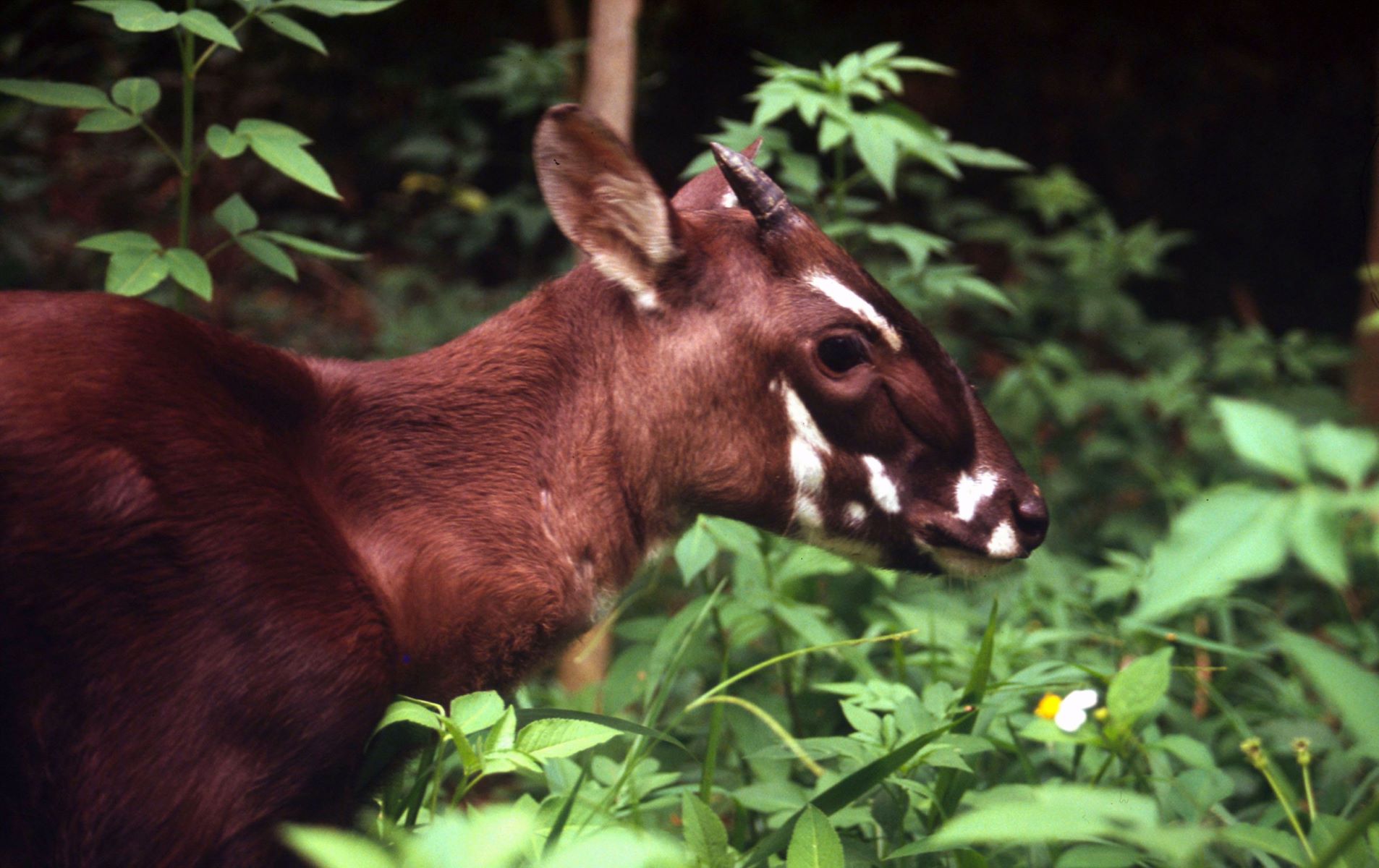
Ever wondered about the mysteries lurking in the dense forests of Southeast Asia? Well, let me introduce you to the Saola, a creature so elusive it's often dubbed the "Asian Unicorn." Why, you ask? Not because it has a single horn, but due to its rare sightings and almost mythical status among wildlife enthusiasts. Saola facts are as fascinating as they are crucial for understanding this enigmatic species. From their unique habitat preferences to their critical conservation status, each fact unveils a layer of the complex tapestry that is our natural world. Ready to dive into the realm of the Saola and learn what makes this creature a marvel of nature? Let's get started, and trust me, it's going to be an intriguing ride!
Key Takeaways:
- Saolas, also known as "Asian unicorns," are rare and elusive creatures with long horns. Conservation efforts are crucial to protect their habitat and ensure their survival.
- The future of saolas depends on conservation, public awareness, international cooperation, and technological advancements. Their existence is vital for the biodiversity of the Annamite Range.
What is a Saola?
Saolas, often referred to as the "Asian unicorns," are one of the world's most elusive and rarest large mammals. Discovered in 1992 during a joint survey conducted by the Ministry of Forestry of Vietnam and the World Wide Fund for Nature, saolas have since fascinated scientists and conservationists alike. Residing in the Annamite Range's dense forests, which border Vietnam and Laos, these creatures are a symbol of biodiversity and the mysteries the natural world still holds.
-
Saolas were only discovered by the Western world in 1992, making them one of the last large mammals to be added to the scientific community's knowledge.
-
They inhabit the Annamite Mountains, a region known for its rich biodiversity but also for its challenging terrain, which complicates conservation efforts.
Why Are Saolas Called "Asian Unicorns"?
The nickname "Asian unicorn" is not due to a horn but rather their elusive nature. Saolas are incredibly rare and seldom seen, with very few people having ever encountered one in the wild. This mystique, combined with their recent discovery, renders them as mythical in the eyes of many as the legendary unicorn.
-
Despite having two horns, the rarity and mystery surrounding saolas have earned them the nickname "Asian unicorns."
-
These animals are so elusive that there is no exact population count, with estimates suggesting only a few dozen to a few hundred individuals exist.
Unique Features of the Saola
Saolas stand out not just for their rarity but also for their distinctive physical characteristics. They have strikingly long and straight horns that can reach up to 20 inches in length. Their coats are a beautiful brown with white markings on the face, and they have large, expressive eyes.
-
Saolas possess two parallel horns, which are smooth and can grow impressively long, adding to their unique appearance.
-
Their diet is primarily composed of leaves, stems, and fruit, showcasing their role as herbivores within their ecosystem.
Threats to Saola Survival
The survival of saolas is under constant threat due to several factors. Habitat loss, primarily from logging and agricultural expansion, is a significant concern. Additionally, they are caught in snares intended for other animals, which poses a direct threat to their dwindling numbers.
-
Poaching and accidental capture in snares, meant for other animals, are critical threats that saolas face in their fight for survival.
-
Habitat destruction, driven by logging and agricultural development, further endangers their existence by shrinking their living spaces.
Conservation Efforts for Saolas
Recognizing the critical status of saolas, conservationists and governments have initiated efforts to protect these enigmatic creatures. Establishing protected areas within their habitat and conducting research to better understand their ecology are steps being taken to ensure their survival.
-
Conservation groups have established protected areas in the Annamite Range to safeguard saolas and their habitat.
-
Research and monitoring efforts are crucial for gathering data on saola populations, which in turn informs conservation strategies.
The Role of Saolas in Their Ecosystem
Saolas play a significant role in their ecosystem as herbivores. By feeding on vegetation, they help maintain the health and balance of their forest habitats. Their presence indicates a healthy, biodiverse ecosystem, which is crucial for the overall health of our planet.
-
As herbivores, saolas contribute to the ecological balance by controlling vegetation growth and ensuring diverse plant life.
-
Their existence is a key indicator of a healthy, thriving ecosystem, underscoring the importance of their conservation for environmental health.
The Future of Saolas
The future of saolas hangs in a delicate balance. With concerted conservation efforts, increased awareness, and stronger enforcement of wildlife protection laws, there is hope for these "Asian unicorns." Protecting saolas is not just about saving a single species but about preserving the rich biodiversity of the Annamite Range and our natural world.
-
The survival of saolas depends heavily on continued and enhanced conservation efforts, including anti-poaching measures and habitat protection.
-
Public awareness and education about the plight of saolas can play a significant role in their conservation, encouraging support for protection measures.
-
International cooperation is crucial, as saolas reside in a region shared by Vietnam and Laos, requiring collaborative conservation strategies.
-
Advances in technology, such as camera traps and genetic analysis, are improving our understanding of saola behavior and population dynamics, offering hope for more effective conservation strategies.
-
Community involvement in conservation efforts is essential, as local communities can play a vital role in protecting saolas and their habitat.
-
Financial support for conservation programs is critical to ensure the long-term survival of saolas, highlighting the need for global support.
-
The establishment of breeding programs could be a future step to increase saola numbers, although this is complicated by their elusive nature and the difficulty in keeping them in captivity.
-
Climate change poses an additional threat to saolas, as changes in their habitat could further endanger their survival.
-
Ultimately, the fate of the saolas is a poignant reminder of the interconnectedness of all living things and the importance of global conservation efforts to preserve our planet's incredible biodiversity.
A Glimpse into the Saola's World
Diving deep into the realm of the Saola, we've uncovered fascinating aspects of this elusive creature. Known as the "Asian Unicorn," its rarity and mystique captivate conservationists and nature enthusiasts alike. Efforts to protect the Saola are crucial, as its existence hangs in a delicate balance, threatened by habitat loss and poaching. This journey through the Saola's life has not only highlighted its unique biology and behavior but also underscored the importance of biodiversity and conservation. As guardians of our planet, the responsibility falls on us to ensure the survival of such extraordinary species. Let's carry forward the knowledge gained and contribute to the preservation of the Saola, a true marvel of nature's creation.
Frequently Asked Questions
Was this page helpful?
Our commitment to delivering trustworthy and engaging content is at the heart of what we do. Each fact on our site is contributed by real users like you, bringing a wealth of diverse insights and information. To ensure the highest standards of accuracy and reliability, our dedicated editors meticulously review each submission. This process guarantees that the facts we share are not only fascinating but also credible. Trust in our commitment to quality and authenticity as you explore and learn with us.


